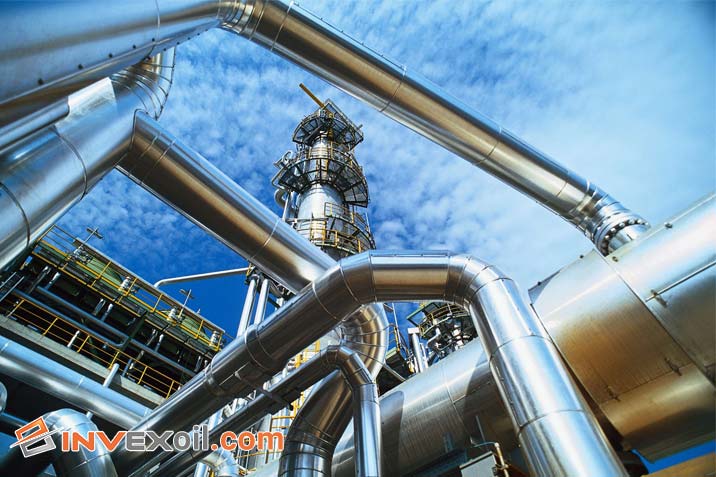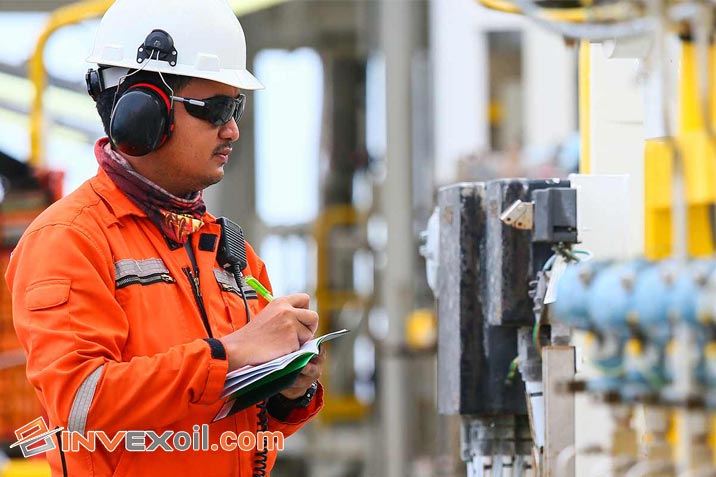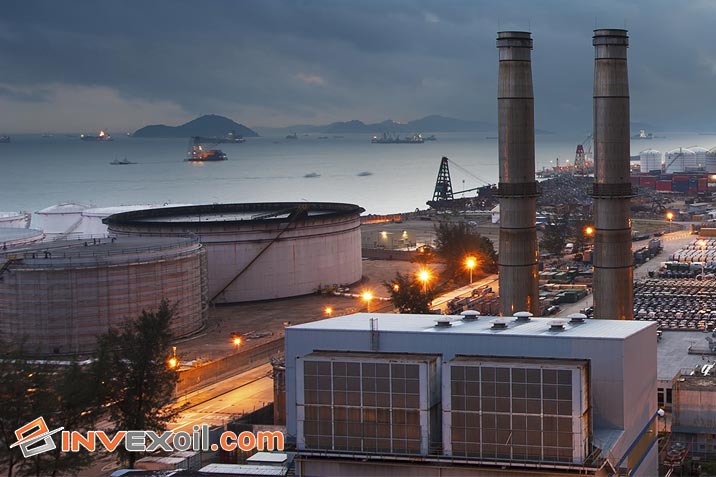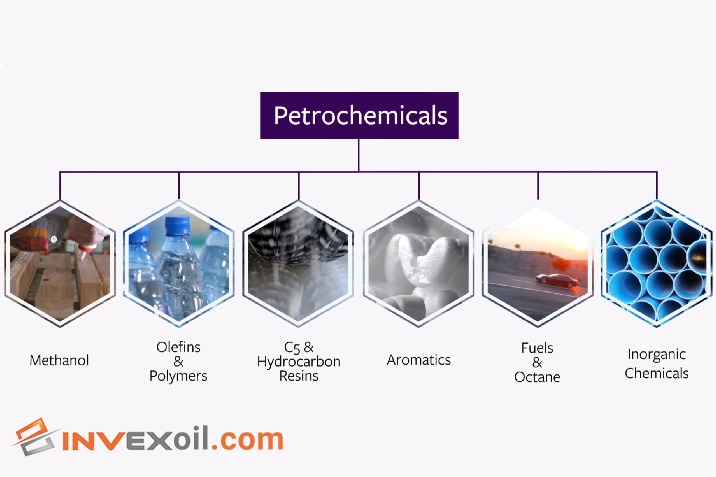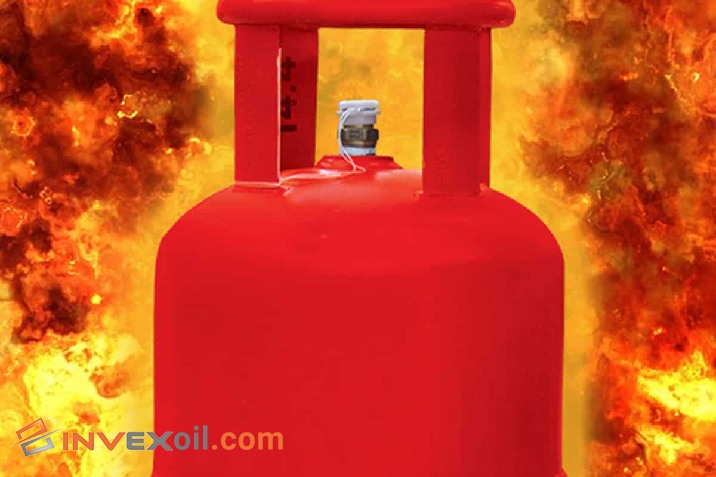In the vast realm of oil and gas production, an essential aspect that deserves attention is the sustainable management of resources. While the focus primarily lies on extracting and harnessing these valuable commodities, it is equally crucial to consider their environmental impact and the need for responsible practices. One such practice is the used oil recycling process, which plays a pivotal role in minimizing waste and maximizing resource efficiency.
Through this process, used oil can be treated and reconditioned, enabling its reuse and reducing the reliance on virgin oil reserves. As we delve deeper into this article, we will explore the intricacies of oil and gas production, including exploration techniques, production operations, environmental considerations, technological advancements, and global trends. By gaining comprehensive insights into this multifaceted industry, we can better understand its challenges, opportunities, and the evolving landscape of energy production.
Table of Contents
Understanding the Oil and Gas Industry
The oil and gas industry is a dynamic sector that plays a vital role in powering economies and fueling various industries worldwide. With its complex web of exploration, extraction, refining, and distribution, this industry encompasses a range of activities aimed at harnessing and delivering these valuable resources. The importance of oil and gas production cannot be overstated, as it serves as the backbone of numerous sectors, including transportation, manufacturing, and energy generation. Understanding the intricacies of this industry is crucial for grasping its significance and the various factors that drive its operations.
The Importance of Oil and Gas Production
Oil and gas production is a fundamental pillar of modern society, serving as the primary source of energy for various sectors. The availability and affordability of oil and gas directly impact global economies, transportation networks, and electricity generation. The demand for these resources continues to rise, driven by population growth, industrialization, and technological advancements. Moreover, oil and gas production contribute significantly to government revenues, employment opportunities, and infrastructure development. As we delve deeper into this article, we will explore the key components and processes involved in oil and gas production, shedding light on the industry’s critical role in powering the world.
Key Components of Oil and Gas Production
The field of oil and gas production comprises various essential components that work together to extract and deliver these valuable resources. One crucial aspect is exploration and drilling techniques, which involve identifying potential oil and gas reserves and extracting them from underground reservoirs.
In This table we can find a quick Comparison of Exploration and Drilling Techniques.
| Technique | Description | Advantages |
| Rotary Drilling | Involves the use of a rotating drill bit to penetrate rock | Versatile and widely used method |
| Directional Drilling | Enables drilling at non-vertical angles | Accesses reservoirs that are otherwise inaccessible |
| Seismic Surveys | Uses sound waves to create subsurface images | Provides detailed information about geological structures |
| Well Logging | Measures physical properties of rocks and fluids | Assists in determining reservoir characteristics |
| 3D Modeling | Creates a digital representation of the subsurface | Helps in visualizing and planning drilling operations |
Exploration and Drilling Techniques
Exploration is the initial stage of oil and gas production, where geoscientists analyze geological data to locate areas with the highest likelihood of containing oil and gas deposits. Once a prospective site is identified, drilling techniques come into play. Advanced drilling methods, such as rotary drilling and directional drilling, are employed to access reservoirs deep beneath the Earth’s surface. These techniques enable engineers to extract oil and gas from the reservoirs through wells.
Exploration and drilling techniques rely on cutting-edge technologies, including seismic surveys, well logging, and 3D modeling, to enhance accuracy and efficiency. These methods help reduce exploration risks and increase the success rate of discovering viable oil and gas reserves.
Reservoir Evaluation and Development Strategies
Reservoir evaluation is a crucial step in oil and gas production, involving the assessment of underground reservoirs to determine their capacity and potential. This process utilizes various techniques, such as well logging, pressure testing, and reservoir modeling, to gather essential data. By understanding reservoir characteristics, engineers can develop effective strategies for optimal production. Factors considered include reservoir permeability, fluid properties, and geological formations. Development strategies may involve drilling additional wells, implementing enhanced oil recovery techniques, or employing reservoir simulation models to maximize recovery rates. These strategies ensure efficient utilization of oil and gas resources while minimizing costs and environmental impacts.
Well Completion and Production Operations
Once a well is drilled, well completion and production operations come into play. Well completion involves the installation of necessary equipment, such as casing, tubing, and valves, to ensure safe and efficient extraction. Production operations encompass activities like well stimulation, artificial lift methods, and production monitoring. Advanced technologies, such as hydraulic fracturing and submersible pumps, enhance well productivity. Regular maintenance, surveillance, and optimization of production operations ensure continuous flow and optimal recovery rates from the reservoir.
Surface Processing and Treatment
Surface processing and treatment refer to the procedures applied to oil and gas streams after extraction to remove impurities and prepare them for distribution. These processes involve separation, dehydration, desalting, and refining techniques. Separation techniques separate oil, gas, and water components, while dehydration removes water content. Desalting eliminates salt and impurities, and refining transforms crude oil into valuable products like gasoline, diesel, and lubricants. Advanced technologies and refining methods ensure high-quality end products that meet industry standards and environmental regulations.
Environmental Considerations in Oil and Gas Production
The oil and gas production industry has a significant impact on the environment, and it is crucial to address and mitigate these effects. Various environmental considerations come into play throughout the production process, including exploration, drilling, extraction, and refining. These activities can result in air and water pollution, habitat destruction, and greenhouse gas emissions.
Impact of Oil and Gas Production on the Environment
Oil and gas production activities can have far-reaching consequences on the environment. The extraction of fossil fuels contributes to greenhouse gas emissions, which contribute to climate change. Additionally, the accidental release of oil and gas during drilling or transportation can lead to marine and terrestrial pollution, harming ecosystems and wildlife. The use of water resources for extraction purposes can also strain local water supplies. It is important to understand these impacts to implement effective mitigation measures.
Regulations and Best Practices for Environmental Protection
To address the environmental challenges associated with oil and gas production, regulations and best practices have been established. Regulatory bodies set standards for emissions control, wastewater management, and land reclamation. Best practices include the use of advanced technologies to reduce emissions, implementing robust spill prevention and response measures, and conducting environmental impact assessments. Industry stakeholders are encouraged to adopt these practices to minimize the environmental footprint of oil and gas production operations.
Considering the environmental implications of oil and gas production is vital to ensure sustainable practices that protect ecosystems, reduce pollution, and mitigate climate change. By adhering to regulations and implementing best practices, the industry can strive for a balance between energy production and environmental preservation.
Technologies and Innovations in Oil and Gas Production
The oil and gas production industry continuously embraces advancements in technology to improve efficiency, safety, and sustainability. These innovations play a crucial role in maximizing the extraction of hydrocarbon resources while minimizing environmental impact.
Advanced Drilling Technologies
Advanced drilling technologies have revolutionized oil and gas production processes, enabling access to previously untapped reserves and enhancing overall operational efficiency. These technologies include:
- Directional Drilling: This technique involves drilling wells at various angles or curves, allowing access to remote or hard-to-reach reservoirs. It enhances productivity by maximizing the contact area with the oil or gas-bearing formation.
- Extended Reach Drilling: With extended reach drilling, wells can be drilled horizontally or in extended lateral sections, significantly increasing reservoir exposure and enhancing hydrocarbon recovery rates.
- Multilateral Drilling: Multilateral drilling involves drilling multiple branches or wellbores from a single vertical or horizontal well, enabling access to multiple reservoirs. It optimizes resource utilization and reduces the environmental footprint.
- Managed Pressure Drilling (MPD): MPD techniques control the wellbore pressure, preventing drilling issues such as blowouts or formation damage. It enhances safety and operational efficiency in challenging drilling conditions.
- Automated Drilling Systems: Automation technologies, including advanced sensors and control systems, improve drilling accuracy, reduce human errors, and enhance operational performance.
By leveraging these advanced drilling technologies, the oil and gas industry can optimize production, minimize environmental impact, and ensure safer operations.
You can use this table as a brief data description of Comparison of Different Advanced Drilling Technologies.
| Drilling Technology | Key Features |
| Directional Drilling | Enables access to remote reservoirs
Increases contact area with the reservoir |
| Extended Reach Drilling | Drills horizontally or in extended lateral sections
Enhances reservoir exposure and hydrocarbon recovery rates |
| Multilateral Drilling | Drills multiple branches or wellbores from a single well
Accesses multiple reservoirs |
| Managed Pressure Drilling | Controls wellbore pressure to prevent drilling issues
Enhances safety and operational efficiency |
| Automated Drilling Systems | Utilizes advanced sensors and control systems for improved accuracy
Reduces human errors and enhances operational performance |
These technologies represent significant advancements in oil and gas production, driving the industry forward and shaping a more sustainable and efficient future.
Enhanced Oil Recovery Techniques
Enhanced oil recovery (EOR) techniques play a vital role in maximizing oil and gas production from reservoirs. These techniques are employed when conventional extraction methods reach their limits. EOR methods aim to improve the recovery factor by utilizing various mechanisms to enhance the displacement of oil within the reservoir.
Methods such as water flooding, gas injection (CO2 or natural gas), and chemical flooding (polymer or surfactant) are commonly used in EOR projects. Water flooding involves injecting water into the reservoir to maintain reservoir pressure and displace oil towards production wells. Gas injection methods utilize gases to either physically sweep the oil or create favorable conditions for its extraction. Chemical flooding involves injecting specially formulated chemicals to alter the properties of the reservoir fluids and improve oil recovery.
Automation and Digitalization in Production Operations
Automation and digitalization have revolutionized oil and gas production operations, enhancing efficiency, safety, and cost-effectiveness. Automation technologies, such as remote monitoring systems, enable real-time data collection, analysis, and control of production processes. This allows operators to optimize production parameters, detect anomalies, and respond promptly to equipment failures or environmental concerns.
Digitalization encompasses technologies like Internet of Things (IoT), artificial intelligence (AI), and machine learning (ML), which enable advanced data analytics and predictive maintenance. These technologies empower operators to make data-driven decisions, improve asset integrity, and optimize production workflows. By leveraging automation and digitalization, the oil and gas industry can minimize downtime, reduce operational costs, and ensure sustainable and safe production practices.
Incorporating enhanced oil recovery techniques and embracing automation and digitalization are crucial steps for oil and gas producers to maximize reservoir potential, improve operational efficiency, and meet growing energy demands in a sustainable manner. These advancements not only optimize production but also contribute to the long-term viability of the oil and gas production industry.
Challenges and Solutions in Oil and Gas Production
The oil and gas production industry faces various challenges that can impact operational efficiency and productivity. However, innovative solutions have emerged to address these issues and ensure sustainable production processes.
Managing Production Decline and Aging Infrastructure
One of the significant challenges in oil and gas production is managing the decline in production from aging fields and infrastructure. As reservoirs mature, their natural production rates decrease, requiring proactive strategies to maintain optimal output. Additionally, aging infrastructure poses risks such as equipment reliability and safety concerns.
To tackle these challenges, operators employ several solutions. Enhanced oil recovery techniques, including water flooding and gas injection, help maintain reservoir pressure and maximize hydrocarbon extraction. Advanced monitoring and predictive maintenance technologies enable the identification of potential equipment failures, allowing proactive maintenance and minimizing downtime.
Furthermore, infrastructure upgrades play a crucial role in sustaining production. Retrofitting existing facilities with modern equipment and technologies improves operational efficiency, reduces environmental impact, and enhances safety standards.
There is a table of Successful Infrastructure Upgrades that you can use it to know better about some of case studies.
| Case Study | Key Upgrades |
| Offshore Platform Upgrade | Installation of advanced subsea production systems
Implementation of remote monitoring and control systems |
| Onshore Facility Renovation | Revamping of processing and treatment units
Integration of state-of-the-art automation and control technologies |
| Pipeline Rehabilitation | Replacement of corroded sections with high-quality materials
Implementation of real-time monitoring systems for leak detection |
These case studies demonstrate the effectiveness of infrastructure upgrades in overcoming production decline and ensuring the longevity of oil and gas operations. By adopting these solutions and continuously investing in innovative technologies, the industry can overcome challenges and maintain a sustainable and efficient oil and gas production landscape.
Health and Safety Risks in Oil and Gas Operations
In oil and gas production, health and safety risks are inherent due to the complex nature of operations and the presence of hazardous substances. Workers in this industry are exposed to various occupational hazards, including physical injuries, chemical exposure, and potential accidents. It is crucial for companies to prioritize the well-being of their workforce and implement robust health and safety protocols.
Proactive measures such as rigorous training programs, strict adherence to safety regulations, and the use of personal protective equipment (PPE) are essential in mitigating these risks. Regular inspections, maintenance of equipment and infrastructure, and emergency preparedness plans are also crucial elements of a comprehensive safety framework. By fostering a culture of safety and providing a safe working environment, companies can minimize accidents, injuries, and occupational illnesses.
Strategies for Cost Optimization and Efficiency Improvement
To thrive in a competitive oil and gas production landscape, companies must continually seek ways to optimize costs and improve operational efficiency. One effective strategy is leveraging advanced technologies to streamline processes and reduce resource wastage. For instance, implementing automation solutions and real-time monitoring systems can enhance productivity, minimize downtime, and optimize energy consumption.
Additionally, adopting data-driven decision-making through analytics and predictive modeling helps identify areas for improvement, optimize production schedules, and optimize resource allocation. Collaboration and knowledge sharing across departments and with industry partners can also lead to innovative cost-saving initiatives. By continuously evaluating and optimizing operational processes, companies can achieve cost efficiencies without compromising safety or quality.
By addressing health and safety risks and implementing cost optimization strategies, oil and gas production companies can create a sustainable and efficient operating environment. This fosters a culture of responsibility, safeguards workers’ well-being, and enables the industry to meet the challenges of a dynamic market while delivering value to stakeholders.
Conclusion
In conclusion, this research guide sheds light on various aspects of oil and gas production. We explored key techniques for enhanced oil recovery, the role of automation and digitalization in production operations, health and safety risks, strategies for cost optimization and efficiency improvement, regional analysis of oil and gas reserves, the shifting energy landscape, future prospects, and investment opportunities.
FAQ
These questions are the most commonly asked about the topic “Complete research guide about oil and gas production”:
What are the key techniques for enhancing oil and gas production?
Key techniques include hydraulic fracturing, carbon dioxide injection, and thermal recovery.
How does automation and digitalization impact oil and gas production?
Automation and digital technologies streamline operations, improve efficiency, and reduce costs in the oil and gas industry.
What are the future prospects and investment opportunities in oil and gas production?
Future prospects include the transition to renewable energy sources, investment in clean energy infrastructure, and smart grid solutions.

Hello, This is Matteo Hudson Copywriter from InvexOil. We are here to provide super-important content to help you learn more easily and be involved in the world of Petroleum and Chemistry. We are here to answer your questions, help you to have better services, and also find the best solution for your problems. Don’t be shy and ask your questions in the comment box or call our number. If you want to connect with me directly, you can search for my name on Linkedin.

